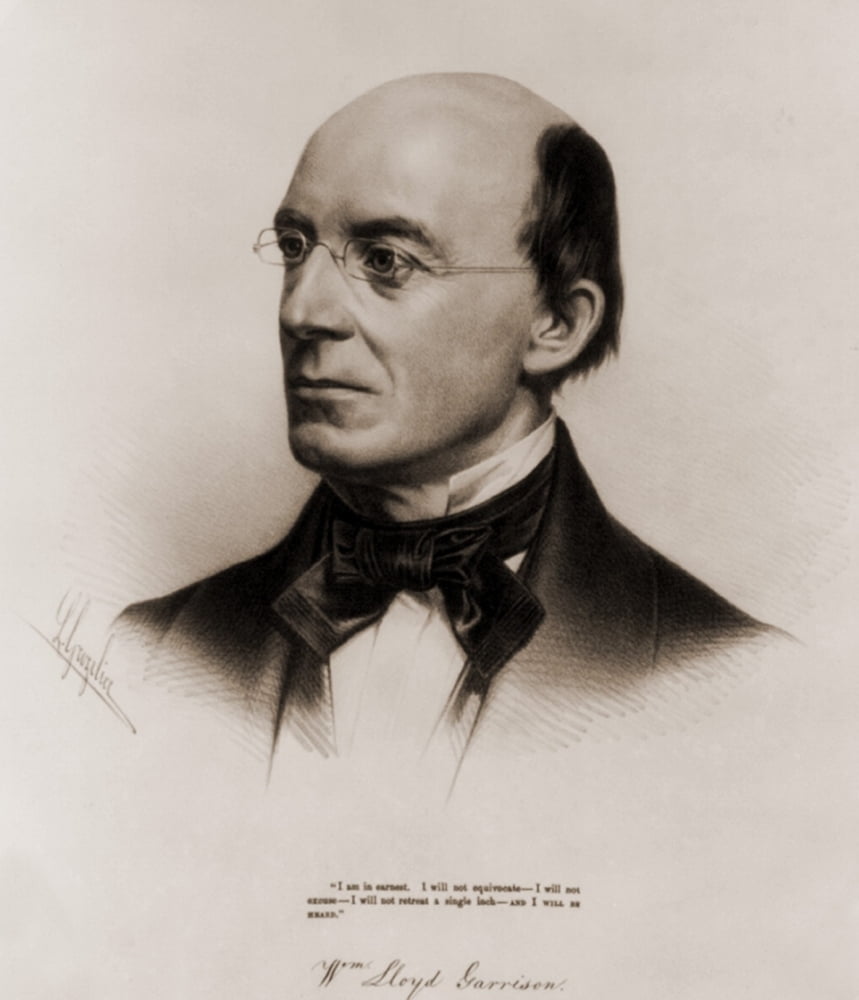

“Millions of people will come through and see these and be affected in some of the same ways that we have been.” “We wanted to get it into the hands of people who would really show it,” Fritz says. While the Garrison family had previously donated to the Massachusetts Historical Society and the Boston Public Library, Fritz convinced his three siblings and four cousins, all of whom shared ownership of the items, that the new Smithsonian museum deserved the donation. The possibility of being able to display personal items is thrilling.”
WILLIAM LLOYD GARRISON FULL
In Bercaw's response to Fritz, she wrote, “To date, we could only represent the very full lives of the Garrisons with newspapers and photographs. his widow purchased 1951 by Foster Wild Rice, Rowayton, Conn.The descendants of abolitionist William Lloyd Garrison donated ten items to the National Museum of African American History and Culture this month.įritz Garrison, the great-great-grandson of William, first reached out to the museum last November, after learning that the museum had already acquired a Garrison family trunk. Davis,Philladelphia his heirs Charles Henry Davis, Bass River, Mass. Purvis, Philadelphia purchased by Edward M. bequest to NPG The Frick Art Reference Library records: Robert W. Provenance Estate of Garrison Norton, Washington, D.C. Aunque su extremismo no era compartido por todos, él y su creciente grupo de seguidores forzaron al norte a asumir la postura, antes considerada radical, de que la esclavitud era inmoral y antitética de cara a los principios fundacionales del país. Garrison llegó al extremo de afirmar que la Constitución era un documento corrupto por permitir la esclavitud. Pero se negó a retroceder: “No voy a ceder ni una pulgada, ¡y van a oírme!”, escribió en su primer mensaje de saludo en el Liberator. En Boston, su ciudad natal, llegaron casi a lincharlo. Al principio fue una voz solitaria, valiente e impopular. Este impresor y editor experimentó una conversión casi religiosa al abolicionismo hacia 1828 y fundó la Sociedad Antiesclavista Americana en 1833. Nacido en Newburyport, Massachusetts William Lloyd Garrison contribuyó a que el movimiento antiesclavista pasara de mera discusión sobre el fin gradual de la esclavitud a ser una cruzada moral que exigía la “emancipación inmediata y completa”. Although his extremism was not shared by all, he and his growing number of followers forced the North to the previously radical proposition that slavery was both immoral and antithetical to the country’s founding principles.

Garrison’s attack on slavery grew so fierce that he condemned the Constitution as a corrupt document for permitting it. But Garrison refused to back down: “I will not retreat a single inch-and I will be heard!” he wrote in the first salutatory address of the Liberator. At first, he was a lone, fierce, and unpopular voice at one point, he was almost lynched in his hometown of Boston. Artist Nathaniel Jocelyn, 1796 - 1881 Sitter William Lloyd Garrison, - Date 1833 Type Painting Medium Oil on wood Dimensions Panel: 75.9 × 63 × 1.3cm (29 7/8 × 24 13/16 × 1/2") Frame: 105.4 x 92.1 x 8.3cm (41 1/2 x 36 1/4 x 3 1/4") Topic Interior Costume\Dress Accessory\Eyeglasses William Lloyd Garrison: Male William Lloyd Garrison: Education and Scholarship\Educator\Lecturer William Lloyd Garrison: Journalism and Media\Newspaper publisher William Lloyd Garrison: Society and Social Change\Reformer\Activist William Lloyd Garrison: Society and Social Change\Reformer\Abolitionist William Lloyd Garrison: Society and Social Change\Reformer\Activist\Civil rights activist\Suffragist William Lloyd Garrison: Society and Social Change\Reformer\Temperance Portrait Place United States\Connecticut\New Haven\New Haven Credit Line National Portrait Gallery, Smithsonian Institution bequest of Garrison Norton Restrictions & Rights CC0 Object number NPG.96.102 Exhibition Label Born Newburyport, Massachusetts William Lloyd Garrison helped transform the antislavery movement from a discussion about gradually ending slavery into a moral crusade demanding “immediate and complete emancipation.” A printer and editor, Garrison experienced his near-religious conversion to abolitionism around 1828 and founded the American Anti-Slavery Society in 1833.


 0 kommentar(er)
0 kommentar(er)
